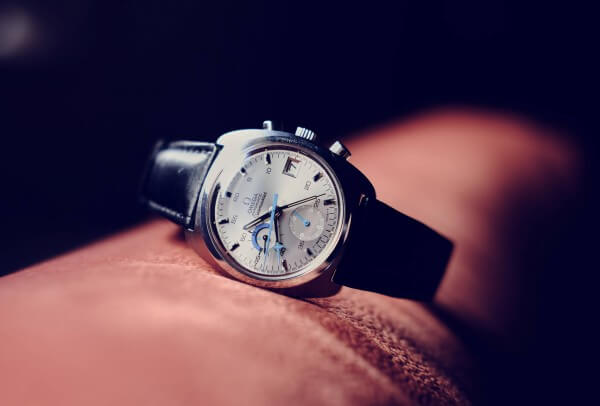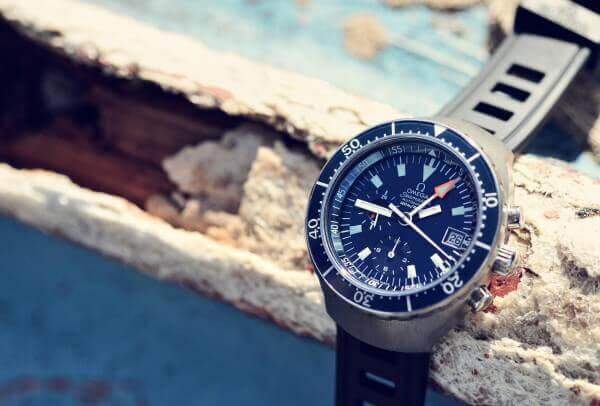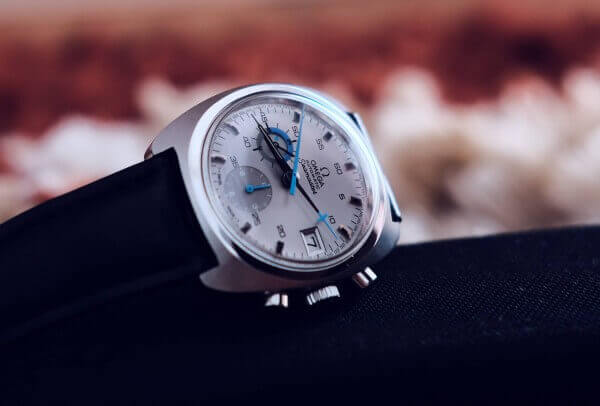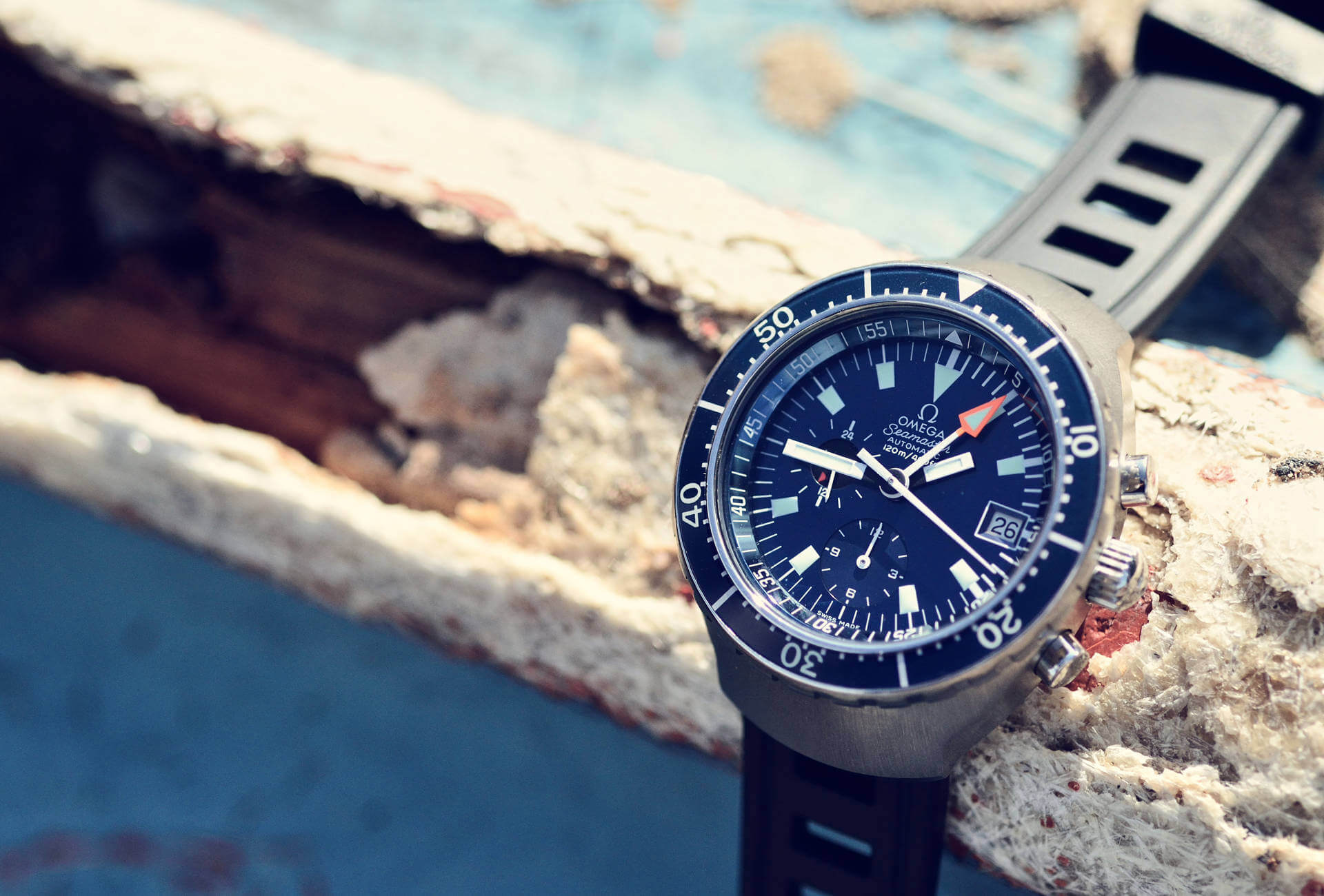Up until the 1960s, the Swiss watch industry relied mainly on high quality hand-wound calibres designed and manufactured by Valjoux, Lemania, Venus, Martel and others. However, sales went into a massive decline due to the ever increasing popularity of the automatic and waterproof watches being offered. The two main competitors (Valjoux and Lemania) decided to create movements that were cheaper to manufacture and therefore easier to mass-produce. This decision came as a result of a working group called “Chronographs and Stop-watches”, created in 1960 by the Federation Horlogère Suisse. In 1962, this working group chaired by Willy Breitling launched a vast promotional campaign in favour of the chronograph in the majority of European countries, backed by the manufacturers who launched a number of new models at this time. The results were impressive: Swiss exports of chronographs in Europe jumped from 52,000 units in 1964 to more than 173,000 in 1969. However, this was not enough and a new boost was needed. An automatic chronograph was the solution.
A central minutes chronograph with its two central hands for minutes and seconds makes reading off elapsed time an incredibly intuitive process
An incredibly intuitive process
The quest for an automatic chronograph was initiated by Lemania during the late 1940s. The great Albert Piguet had already produced prototypes of a CH27 calibre with an automatic bumper movement in 1947 but the project was abandoned as superfluous. According to the literature, the final vote to scrap it was actually made by the chairman of Omega. This created a vacuum which was filled in 1969, a landmark year for the watch industry that saw Breitling, Heuer, Seiko and Zenith announce the first automatic chronograph calibres: Heuer/Breitling/Büren with Cal. 11, Zenith with El Primero Cal.3019 and Seiko with Cal. 6139. Lemania responded with Cal. 1340 in 1970.
The latter 22-jewel movement was state of the art, running at 28,800 vph and endowed with a 44-hour power reserve. Omega also introduced the same calibre as Cal. 1040, featuring a 24-hour indicator placed at 9 o’clock in the constant-seconds subdial. It was a rhodium-finished calibre, with a cam/lever combination and other architectural choices inherited from its ancestors (Lemania 2310). It had a delrin blocking lever as well as a date with a quickset function, while the rotor was mounted on ball bearings so it could wind the movement in both directions, an invention by Marius Meylan-Piguet. The calibre was first introduced in Omega’s line-up with the Omega Seamaster chronograph (ref.176.001) in late 1971 and the Speedmaster MkIII (ref.176.002) in 1972. Lemania also used the 1340 and the 1341, a simpler variation, in a vast number of models from companies like Tissot, Nivada, Walkman, Hamilton, Bucherer, etc.
This configuration offers unique advantages. A central minutes chronograph with its two central hands for minutes and seconds makes reading off elapsed time an incredibly intuitive process, since the eye recognizes the position of the minutes hand on the dial immediately, as opposed to reading a small 30-minute subdial. The eminently useful central chronograph minutes hand was typically styled with an “airplane” tip to distinguish it from the seconds hand. Another big advantage is that this configuration frees up space on a relatively small dial for displaying other useful complications such as a 24-hour counter or a day and date indication. We are therefore talking about a mechanical calibre which, combined with a specifically well designed dial, gives its user a wealth of information.

For example, on an Omega Speedmaster Mark IV, which was equipped with Cal.1040, we have a 60-minute chronograph, a 12-hour counter at 6 o’clock, continuous small seconds and a 24-hour indicator at 9 o’clock and a date aperture at 3 o’clock with the addition of a tachymetric scale. Most importantly, all these were presented in a fairly straightforward way. The apogee for this family of calibres was reached with the Omega 1041, a movement modified so that it could achieve chronometer grade. It was adjusted to five positions and was used in the Speedmaster 125, the world’s first COSC-certified chronograph.
Valjoux over Lemania
However, despite the fact that this family of calibres incorporating the unique central minutes chronograph complication was superior, it also had several major disadvantages. These movements were expensive to build and tricky to service, which naturally created problems for companies that had to deal with the grim reality created by the quartz crisis. In 1972, Valjoux responded by introducing Cal. 7750: a high-quality movement that was more traditional in its configuration, easier to produce and service, and last but not least was easy to modify and work with. Lemania retaliated with Cal. 5100, which introduced a slightly different configuration from Cal.1340 and had nylon parts to keep costs down. The first model equipped with that movement was the Omega Speedmaster Mark 4.5 (ref.176.012) in 1974. The 5100 movement was soon widely adopted for use by a wide range of brands, from Orfina Porsche Design, Sinn and Tutima to Fortis and Heuer. Due to its relative robustness and resistance to shocks, it became the undisputed mechanical chronograph for military contracts.
Leaving aside horological innovation for a moment, one must point out that the situation in the early 1980s was extremely bad for the Swiss watchmaking industry. By 1983, the authorities encouraged the merger of Lemania’s group SSIH with the owner of Valjoux, ASUAG, to create the SMH (Société de Microélectronique et d’Horlogerie), which eventually became the Swatch Group in 1998 under the control of the late Nicolas Hayek.
The SSIH brought to the table Lemania’s calibre portfolio, and the ASUAG brought the Valjoux portfolio. The 7750 was the clear winner. It was cheaper for third parties to purchase, as well as being easier to modify and easier to service. When facing the decision to reinvest in the tooling and manufacturing of Lemania 1340 and 5100 ebauches, the Swatch Group probably came to the conclusion that they were not profitable enough in comparison with the Valjoux 7750. In parallel the Lemania factories went through a hiatus until 1991, when they were incorporated into the Groupe Horloger Breguet. To the dismay of all observers, production of the 5100 was brought to an end despite its technical qualities. Calibre 1340 was a bit more fortunate: although small-scale, production is still active, exclusively for Breguet. Sadly though, the central minutes counter has been replaced by a 30-minute subdial.
Ever since, cries for a central minutes chronograph movement have largely fallen on deaf ears. There have been a few sporadic attempts, like TAG Heuer’s Calibre 60, which was actually an ETA 2892 with a Dubois-Dupraz module grafted on top. The same modular construction was used by Girard-Perregaux on its Laureato evo3 and most notably by Omega and Breitling as well. Breguet also used the 584Q calibre, a direct descendant of the 1340 on its Transatlantique Type XXI. Sinn recently developed its SZ-01, which is an extensive modification of the 7750 to mimic the function and appearance of the Lemania 5100. Another German manufacturer, Damasko, followed the same path, while Habring also produces a line of central minutes chronographs based on a modified version of the 7750. A properly integrated central minutes chronograph calibre is however clearly lacking.

Why not be a romantic?
Therefore, the demise of the central minutes chronograph and the current irritating refusal to embrace it once again – despite its functional advantage and its horological significance – stem from a combination of factors. First and foremost, it has until now been largely due to pervasive use of the Valjoux 7750 – a calibre that is easy to modify and work with – in nearly all Swiss chronographs not developed in-house. Secondly, the fact that Swatch Group owns ETA and Lemania – the latter having been largely absorbed by Breguet – makes them extremely powerful. The group’s momentous decision to cease selling its ETA watch parts to any other company as of December 31st 2019 has in recent years led several high-end brands to focus on developing their own in-house movements, or creating alternative movements based on ETA ebauches. Given that the development of a single regular calibre in-house is extremely costly, one can imagine how hard it is to develop a chronograph or even one with a central minute complication. Companies like Soprod or Sellita have to do a lot of work and reverse engineering in order to be able to accomplish what Lemania did in the 1970s. Thirdly, what caused the Swiss industry to create the automatic chronograph? Quite simply a desire to gain a new share of the market, since the use of the hand-wound chronograph had declined. While Lemania and Omega used to produce automatic central minutes calibres, cost-related issues once again led to the demise of these movements that were a very expensive choice. It all comes down to economics.

Last but not least, there is a change in how we perceive a chronograph nowadays. Is the mechanical chronograph a tool or just an unwanted complication whose sole purpose is to be a nice conversation starter? Given that looks are tending to be considered more important than function and that the marketing departments (rather than the engineers) dictate how a product should be designed, it is easy to see that the symmetry offered by a three-counter chronograph is deemed much more appealing than the legibility and the functionality of a central minute chronograph. “Form follows function” is a maxim that does not seem to make a lot of sense in this case. The way something looks is determined by its appearance alone and no longer by its purpose.
Sadly, I do not see this excellent complication/configuration being adopted any time soon by a major manufacturer other than the Swatch Group. For the overwhelming majority of Swiss companies, this might be an inefficient and risky decision to create from scratch such a calibre that probably will echo to a niche part of the market. The only hope for chronograph aficionados is to wait for the Swatch Group to deliver. Having amassed the know-how, this is the only alternative for the production of a relative affordable chronograph with a central minute movement based upon the 1340/1040-1. Let’s hope that for once in this day and age, emotion and love for mechanical creations will prevail over excess profit. It’s good to be a romantic, isn’t it?













